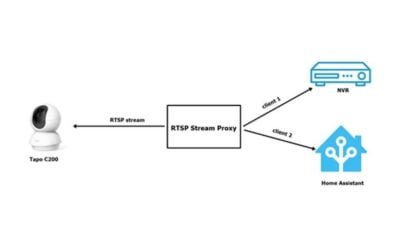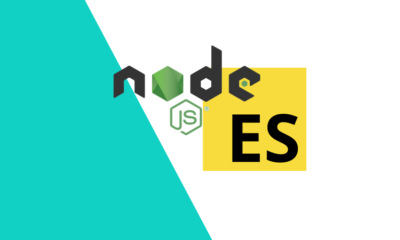Desktop Software
How to request push notification permission in React Native?

[ad_1]
In this article, we will discuss the process of requesting push notification permission in a React Native application. We will walk through the steps involved in obtaining user consent for push notifications in order to engage users and keep them informed about new content, updates, or important information.
How to Add Push Notification Permission Request to Your React Native App
To request push notification permission in React Native, you will need to first set up the necessary permissions and handle user responses. Here’s how you can achieve this:
First, you will need to install the @react-native-community/push-notification-ios package using npm or yarn. This package provides a unified way of requesting push notification permissions on iOS devices.
Requesting Permission for Android Devices
To request push notification permission on Android devices, you will need to use the @react-native-firebase/messaging package. This package allows you to handle push notification permissions and manage messaging services for Android devices. Follow the documentation to set up the required permissions for your app.
Handling Permission Requests for Both Platforms
Once you have installed the necessary packages, you will need to handle the permission requests for both iOS and Android platforms. This can be done by prompting the user to grant permission when they first launch the app or when they interact with specific features that require push notifications.
For iOS, you will use the @react-native-community/push-notification-ios package to request permissions and handle the user’s response. For Android, you will use the @react-native-firebase/messaging package to handle permission requests.
Conclusion
Requesting push notification permission in a React Native app is essential for keeping users engaged and informed about important updates and content. By following the steps outlined in this article, you can ensure that your app prompts users for permission and handles their responses in a seamless and user-friendly manner.
FAQs
1. Is it necessary to request push notification permission in a React Native app?
Yes, requesting push notification permission is important for keeping users informed about new content, updates, or important information. It also helps in engaging users and increasing app retention.
2. Can I customize the push notification permission request message?
Yes, you can customize the push notification permission request message to explain to users why the app needs permission to send them notifications. This can help in increasing user consent.
3. What should I do if a user denies push notification permission?
If a user denies push notification permission, you should respect their decision and provide an alternative way for them to stay informed about important updates or content within the app.
4. Do I need to handle push notification permissions differently for iOS and Android?
Yes, you will need to handle push notification permissions differently for iOS and Android platforms. Each platform has its own set of packages and methods for requesting and handling push notification permissions.
5. Can I prompt the user to grant push notification permission at a later time?
Yes, you can prompt the user to grant push notification permission at a later time, such as when they interact with specific features that require push notifications. However, it’s important to handle the user’s response gracefully and provide clear information about the benefits of enabling push notifications.
[ad_2]
Desktop Software
How can I create a launcher in Ubuntu 22.04?

[ad_1]
In this article, we will discuss how to create a launcher in Ubuntu 22.04. A launcher is a shortcut to quickly access applications or files on your system. By creating a launcher, you can have easy access to your favorite programs without having to navigate through menus or search for them.
How can I create a launcher in Ubuntu 22.04?
To create a launcher in Ubuntu 22.04, follow these simple steps:
- Right-click on the desktop or an empty space in any folder and select “Create Launcher” from the context menu.
- In the “Type” drop-down menu, select “Application” for launching an application or “Link” for opening a URL.
- Enter the name of the launcher in the “Name” field and the command or URL in the “Command” field.
- You can also choose an icon for the launcher by clicking on the icon next to the “Name” field and selecting an image file.
- Finally, click “OK” to create the launcher on your desktop or in the folder.
Now you have successfully created a launcher in Ubuntu 22.04. You can double-click on the launcher to open the application or visit the URL specified.
Conclusion
Creating a launcher in Ubuntu 22.04 is a simple and efficient way to access your favorite programs and files quickly. By following the steps outlined in this article, you can customize your desktop and improve your productivity. Take advantage of this feature to streamline your workflow and make your computing experience more convenient.
FAQs
How do I edit a launcher in Ubuntu 22.04?
To edit a launcher in Ubuntu 22.04, right-click on the launcher icon and select “Properties” from the context menu. You can then change the name, command, or icon of the launcher as needed.
Can I move a launcher to the desktop or a different folder?
Yes, you can move a launcher to the desktop or a different folder by dragging and dropping the icon to the desired location. Alternatively, you can right-click on the launcher, select “Move to,” and choose the destination folder.
How do I remove a launcher from my desktop?
To remove a launcher from your desktop, right-click on the icon and select “Delete” or “Move to Trash” from the context menu. Confirm the action, and the launcher will be removed from your desktop.
Can I create a launcher for a specific file or document?
Yes, you can create a launcher for a specific file or document by selecting the file in the “Command” field when creating the launcher. Double-clicking on the launcher will then open the file in the associated application.
Is it possible to create a launcher for a terminal command in Ubuntu 22.04?
Yes, you can create a launcher for a terminal command in Ubuntu 22.04 by entering the command in the “Command” field when creating the launcher. This allows you to quickly execute the command with a single click on the launcher icon.
[ad_2]
Desktop Software
Why Won’t Teams Start When Clicking on “Launch it Now”?

Users often face frustration when attempting to join Microsoft Teams meetings via provided links, only to find that nothing happens upon clicking “Launch it now.” This problem typically stems from how your computer is configured to handle protocol links, which direct the operating system to open specific applications based on the type of link clicked.
In the case of Microsoft Teams, these links should automatically open the Teams application and direct you to the meeting. However, if your system isn’t properly configured to recognize Teams as the default application for handling these protocol links, clicking on a meeting link might not trigger any action. This issue can be particularly perplexing for users who rely on Teams for daily communication and collaboration.
How Can You Fix the Problem?
The solution to this problem involves adjusting the default apps settings within Windows. This ensures that Microsoft Teams is set to handle its associated protocols, a crucial step for the operating system to know that Teams links should be opened with the Teams application. This adjustment can be made through the Windows Settings menu, specifically within the “Apps” and “Default Apps” sections.
- * Click “Set defaults by app”

- * Select Teams

- * Click on each Choose a default and select Microsoft Teams from the menu



By manually setting Microsoft Teams as the default application for its associated protocols, you inform your computer to direct any Teams-related links to the Teams app. This process might require navigating through the “Set Defaults by App” option and ensuring that all protocols related to Teams are checked. Although it might seem technical, this adjustment is straightforward and can significantly improve your experience with Microsoft Teams.

What Causes These Default App Conflicts?
Several factors can cause your computer to fail to recognize Microsoft Teams as the default app for handling meeting links. Common reasons include incomplete or corrupted app installations, recent system updates that reset default app settings, or conflicts with other software that might have taken over the handling of certain protocols.
Understanding these potential conflicts can help users preemptively address issues before they disrupt the workflow. Regularly checking default app settings, especially after installing updates or new software, can prevent many of these problems from arising, ensuring a smoother operation of applications like Microsoft Teams.
Conclusion
The inability to join Microsoft Teams meetings via “Launch it now” links can be a significant hindrance to productivity and collaboration. However, by understanding the role of default app settings and protocol handling within your operating system, you can resolve this issue. Adjusting the default apps settings to ensure Teams is recognized as the default application for its protocols is a reliable solution. This not only enhances your experience with Teams but also offers insights into managing application interactions on your computer.
FAQs
- Can these settings affect other applications?
Yes, adjusting default app settings can influence how other applications open certain types of links. It’s important to review these settings regularly to ensure all apps work as expected. - Will these adjustments need to be repeated?
Depending on system updates or new software installations, you might need to revisit these settings to ensure Teams remains set as the default app for its protocols. - Are these settings specific to Windows?
While this article focuses on Windows, similar principles apply to other operating systems, though the steps to adjust default app settings may vary. - What if Teams still won’t open after adjusting the settings?
If Teams still doesn’t open, consider reinstalling the app or checking for updates, as the issue might stem from the application itself rather than the system’s settings. - Can IT administrators make these adjustments for all users?
Yes, IT administrators can adjust default app settings across multiple computers through group policy settings, ensuring a consistent experience for all users within an organization
Desktop Software
How can I convert RTSP streaming to HTTP Live Streaming (HLS)?

[ad_1]
In this article, we will discuss how to convert RTSP streaming to HTTP Live Streaming (HLS). We will explore the advantages of using HLS, the steps to convert RTSP to HLS, and common FAQs regarding the process. By the end of this article, you will have a clear understanding of how to seamlessly convert RTSP streaming to HLS for improved playback compatibility.
Why Should You Convert RTSP Streaming to HLS?
RTSP (Real-Time Streaming Protocol) is a popular protocol for streaming audio and video content over the internet. However, RTSP is not supported by all devices and browsers, making it less versatile for modern streaming needs. On the other hand, HLS (HTTP Live Streaming) is widely supported across devices and platforms, offering better compatibility and scalability for streaming media.
By converting RTSP streaming to HLS, you can reach a larger audience and provide a seamless streaming experience on various devices. HLS uses adaptive bitrate streaming, which adjusts the quality of the video based on the viewer’s internet connection, ensuring smooth playback without buffering. Additionally, HLS allows for easy integration with content delivery networks (CDNs) for faster delivery of media content.
How Can You Convert RTSP Streaming to HLS?
To convert RTSP streaming to HLS, you will need to use a media server that supports both protocols. One of the popular options for this conversion is using FFmpeg, a powerful multimedia framework that can handle the conversion process efficiently. Here are the steps to convert RTSP to HLS using FFmpeg:
1. Install FFmpeg on your system if you haven’t already. You can download FFmpeg from the official website and follow the installation instructions for your operating system.
2. Open a terminal window and use the following command to convert RTSP streaming to HLS:
ffmpeg -i rtsp://example.com/stream -c copy -f hls -hls_time 10 -hls_list_size 6 /path/to/output.m3u8In this command, replace “rtsp://example.com/stream” with the RTSP streaming URL you want to convert and “/path/to/output.m3u8” with the desired output location for the HLS files.
What Are Some Common FAQs About Converting RTSP to HLS?
1. Can I convert RTSP streaming to HLS without using FFmpeg?
While FFmpeg is a popular choice for converting RTSP to HLS, there are other media servers and tools that can also handle this conversion process. You can explore alternative options that suit your specific requirements and preferences.
2. Do I need a high-speed internet connection to stream HLS content?
HLS uses adaptive bitrate streaming, which adjusts the video quality based on the viewer’s internet connection. This means that HLS content can be streamed efficiently even with varying internet speeds, ensuring a smooth playback experience for viewers.
3. Can I add subtitles and captions to HLS streams?
Yes, you can add subtitles and captions to HLS streams by including the necessary tracks in the HLS manifest file (.m3u8). You can create subtitle tracks in different languages and formats to enhance the accessibility and viewer experience of your HLS content.
4. How can I optimize my HLS streams for better performance?
To optimize your HLS streams for better performance, you can adjust the HLS settings such as bitrate, segment duration, and key frame interval. Experimenting with different configurations and monitoring the playback quality can help you fine-tune your HLS streams for optimal performance.
5. Can I use HLS for live streaming events?
Yes, HLS is commonly used for live streaming events due to its adaptive bitrate streaming capabilities and wide device compatibility. You can set up HLS streams for live events with real-time encoding and delivery to provide a seamless viewing experience for online viewers.
Conclusion
Converting RTSP streaming to HLS offers numerous benefits, including improved compatibility, scalability, and better streaming performance. By following the steps outlined in this article and exploring the FAQs, you can successfully convert RTSP to HLS for a seamless streaming experience across devices and platforms.
[ad_2]
-

 Programming9 months ago
Programming9 months agoArgo CD vs Jenkins: Which is the Better Continuous Deployment Tool?
-

 Desktop Software9 months ago
Desktop Software9 months agoHow can I convert RTSP streaming to HTTP Live Streaming (HLS)?
-

 Programming9 months ago
Programming9 months agoHow to generate insert statements in DBeaver?
-

 Desktop Software9 months ago
Desktop Software9 months agoHow can I trigger a GitHub action via API?
-

 Web Development9 months ago
Web Development9 months agoHow can I make text not selectable in CSS?
-

 Mobile Software9 months ago
Mobile Software9 months agoHow can I migrate from react-scripts 4 to 5 in my React app?
-

 Desktop Software10 months ago
Desktop Software10 months agoWhich import alias would you like to have configured in Next.js?
-

 Programming9 months ago
Programming9 months agoWhat should I do if ‘router-outlet’ is not a known element in Angular?
















